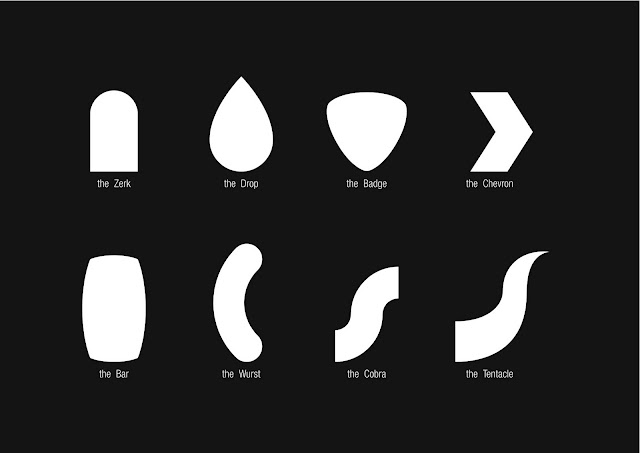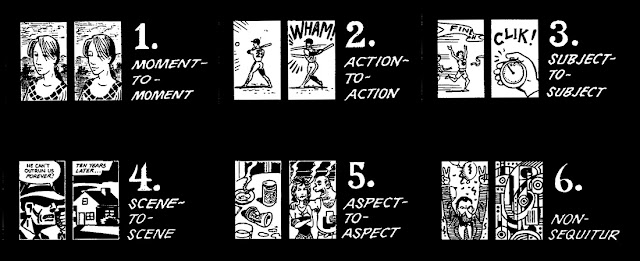2D Animation - Project 1 (Limited Animation/Stop Motion Animatics)
2D Animation - Project 1 (Limited Animation/Stop Motion Animatics)
26 March, 2018 - 16 April, 2018 (Week 1 - Week 4)
Jesslyn Fabryando (0332213)
2D Animation
Lecture 1: Introduction to 2D Animation
26 March, 2018 (Week 1)
On the first week of the class, our lecturer, Mr. Hafiz, introduced us about 2D Animation is all about. He briefly explained about the module and letting us know what project that we will be doing throughout the course. In the middle of the class discussion, Mr. Hafiz showed us some examples about the work done by the seniors before.
Before the class ended we were given an assignment which is to explore more about animation. We were tasked to make a flip book.
12 Basic Principles of 2D Animation:
Tutorial 2: Introduction about the first project (Limited Animation/Stop Motion Animatics)
For this first project we were given a link about some samples to give an idea about what limited animation and stop motion animatics look like.
References:
https://www.youtube.com/watch?time_continue=5&v=AYeTwfyx0nw
https://www.youtube.com/watch?v=uuGaqLT-gO4
In this tutorial we were introduced to the software of Adobe Animate to create some animation. So, we were asked to play around and get to know Adobe Flash software further more. As a practice, we converted our characters from the flip book to digital animation.
Project 1 - Work Processes - STOP MOTION ANIMATION
Lecture 3: watch some videos about stop motion, metamorphosis, and the process making of animation
9 April, 2018 (Week 3)
On the third week of class, Mr Hafiz let us watched some samples of the process making some of the animations from scratch. The video consist of the storyboards being animated until it is finalized. From the video we watched, he wanted to see the same progress of the stop motion by making a rough sketch of the storyboards. Mr. Hafiz told us that overtime we produce animations we always work together with different people because it will take a long time to work alone from scratch. As a results, we were given a group exercise that train us to work together. In a group consist of 3 members. So, we need to divide our task who is who doing the storyboards, sound effect and the animations.
Link watched in class:
Good books- metamorphosishttps://www.youtube.com/watch?v=WTfdqPutk5Y&t=31s
cold play - strawberry string: https://www.youtube.com/watch?v=h3pJZSTQqIg
Gulp - stop motion (making): https://www.youtube.com/watch?v=45-IBvpd7aQ
Gulp - stop motion: https://www.youtube.com/watch?v=x6sccl8rikg
Kubo and the 2 strings: https://www.youtube.com/watch?time_continue=16&v=RrAhGIpxENs
MUTO - a wall painted animation: https://www.youtube.com/watch?time_continue=2&v=uuGaqLT-gO4
Kraak and smaak- squeeze me: https://www.youtube.com/watch?v=AYeTwfyx0nw
FINAL OUTCOME: https://youtu.be/nW-JlS8yA5M
The stop motion we submitted and showed it to the class have no eyes and the clouds doesn't move. The feedback that we got is that, it's nice and the animation is okay however it's flat. We got time to adjust and the outcome is the one above.
Further Reading:
https://en.wikipedia.org/wiki/Foley_(filmmaking)
On the first week of the class, our lecturer, Mr. Hafiz, introduced us about 2D Animation is all about. He briefly explained about the module and letting us know what project that we will be doing throughout the course. In the middle of the class discussion, Mr. Hafiz showed us some examples about the work done by the seniors before.
Before the class ended we were given an assignment which is to explore more about animation. We were tasked to make a flip book.
Lecture 2: Introduction about the 12 basic principles of 2D Animation
2 April, 2018 (Week 2)
On the second week of the class, we were introduced about the 12 basic principles of 2D animation. To understand better about this 12 principles we were shown a video to watch called 'The Illusion of life'. ( https://www.youtube.com/watch?v=jn5OB12u8Pw )
On the second week of the class, we were introduced about the 12 basic principles of 2D animation. To understand better about this 12 principles we were shown a video to watch called 'The Illusion of life'. ( https://www.youtube.com/watch?v=jn5OB12u8Pw )
12 Basic Principles of 2D Animation:
- Squash and stretch
- Gives the illusion of weight and volume of action.
- Anticipation
- Prepares the audience for a major action.
- Staging
- Presentation of an object so it is clear.
- Pose-to-pose and straight-ahead
- The first consists of a few key drawings set throughout the scene, straight ahead animation starts from the beginning and progresses through time.
- Follow-through and overlapping
- When the main part of a body stops, all the other parts try to catch up. Nothing stops at once.
- Slow in and Slow out
- More drawing at the start and end. The character eases in and out of the action.
- Arcs
- Most movements happen in arcs, to give animation better flow.
- Secondary action
- An additional action that helps reinforce the main action
- Timing
- More drawings creates slower animation, less creates faster crisper actions
- Exaggeration
- Maintaining reality but presenting it in a more extreme form
- Solid drawings
- Taking into account forms in 3D space, giving them volume and weight
- Appeal
- The charm and charisma of an action.
Tutorial 2: Introduction about the first project (Limited Animation/Stop Motion Animatics)
For this first project we were given a link about some samples to give an idea about what limited animation and stop motion animatics look like.
References:
https://www.youtube.com/watch?time_continue=5&v=AYeTwfyx0nw
https://www.youtube.com/watch?v=uuGaqLT-gO4
In this tutorial we were introduced to the software of Adobe Animate to create some animation. So, we were asked to play around and get to know Adobe Flash software further more. As a practice, we converted our characters from the flip book to digital animation.
 |
| Fig. 1. GIF of transforming the flip book animation into digital animation |
Project 1 - Work Processes - STOP MOTION ANIMATION
Lecture 3: watch some videos about stop motion, metamorphosis, and the process making of animation
On the third week of class, Mr Hafiz let us watched some samples of the process making some of the animations from scratch. The video consist of the storyboards being animated until it is finalized. From the video we watched, he wanted to see the same progress of the stop motion by making a rough sketch of the storyboards. Mr. Hafiz told us that overtime we produce animations we always work together with different people because it will take a long time to work alone from scratch. As a results, we were given a group exercise that train us to work together. In a group consist of 3 members. So, we need to divide our task who is who doing the storyboards, sound effect and the animations.
Link watched in class:
Good books- metamorphosishttps://www.youtube.com/watch?v=WTfdqPutk5Y&t=31s
cold play - strawberry string: https://www.youtube.com/watch?v=h3pJZSTQqIg
Gulp - stop motion (making): https://www.youtube.com/watch?v=45-IBvpd7aQ
Gulp - stop motion: https://www.youtube.com/watch?v=x6sccl8rikg
Kubo and the 2 strings: https://www.youtube.com/watch?time_continue=16&v=RrAhGIpxENs
MUTO - a wall painted animation: https://www.youtube.com/watch?time_continue=2&v=uuGaqLT-gO4
Kraak and smaak- squeeze me: https://www.youtube.com/watch?v=AYeTwfyx0nw
Description: Stop motion about how Hawaiian pizza is made.
It started of with a black screen then there’s a (real) pineapple which indicates as house in an island. It was zoom in to the pineapple’s door. The front part of the pineapple which is the door is opened and a character representing the pineapple comes out. The pineapple then walk around the island and is met with a (real) tomato. When the pineapple is standing beside the tomato, a character representing the tomato comes to live, popping out from the big tomato. As both of them walk through the island, a cheese character run from behind and catch up with them. The three characters then walk even further to the beach until they can see the sand. As they reach their foot on the sand they began to walk to the center and was shone by the sun. They lay down and suddenly they were drawn to the bottom of the sand. A blackout and a time was displayed. (zoom out) They turned into a HAWAIIAN PIZZA.
Link References:
Thumbnails:
 |
| Fig. 2. Rough thumbnail drawn sketches |
 |
| Fig. 2.1. Second thumbnails drawn in photoshop |
 |
| Fig. 2.2 Completed Final Thumbnails |
The stop motion we submitted and showed it to the class have no eyes and the clouds doesn't move. The feedback that we got is that, it's nice and the animation is okay however it's flat. We got time to adjust and the outcome is the one above.
Lecture 4: Introduction to straight ahead and pose to pose
16 April, 2018 (Week 4)
On the forth week, Mr hafiz gave us a lecture about the difference between straight ahead and pose to pose animation. For further understanding he gave an example in Adobe Animate for us to be able to tell the difference.
Straight Ahead Action in hand drawn animation is when the animator starts at the first drawing in a scene and then draws all of the subsequent frames until he reaches the end of the scene. This creates very spontaneous and zany looking animation and is used for wild, scrambling action.
Pose-to-Pose Action is when the animator carefully plans out the animation, draws a sequence of poses, i.e., the initial, some in-between, and the final poses and then draws all the in-between frames (or another artist or the computer draws the inbetween frames). This is used when the scene requires more thought and the poses and timing are important.
At the end of the class, Mr. Hafiz brief us for the second project which is 'Metamorphosis'. Making a metamorphosis should include rotation, explosion and others so that it will look good.
On the forth week, Mr hafiz gave us a lecture about the difference between straight ahead and pose to pose animation. For further understanding he gave an example in Adobe Animate for us to be able to tell the difference.
Straight Ahead Action in hand drawn animation is when the animator starts at the first drawing in a scene and then draws all of the subsequent frames until he reaches the end of the scene. This creates very spontaneous and zany looking animation and is used for wild, scrambling action.
Pose-to-Pose Action is when the animator carefully plans out the animation, draws a sequence of poses, i.e., the initial, some in-between, and the final poses and then draws all the in-between frames (or another artist or the computer draws the inbetween frames). This is used when the scene requires more thought and the poses and timing are important.
At the end of the class, Mr. Hafiz brief us for the second project which is 'Metamorphosis'. Making a metamorphosis should include rotation, explosion and others so that it will look good.
Further Reading:
References of 2D Animation video called Duet by Glen Keane:
References understanding the 12 basic principles of 2D Animation: https://www.youtube.com/watch?time_continue=581&v=uDqjIdI4bF4
Reference foley(film making):https://en.wikipedia.org/wiki/Foley_(filmmaking)



Comments
Post a Comment